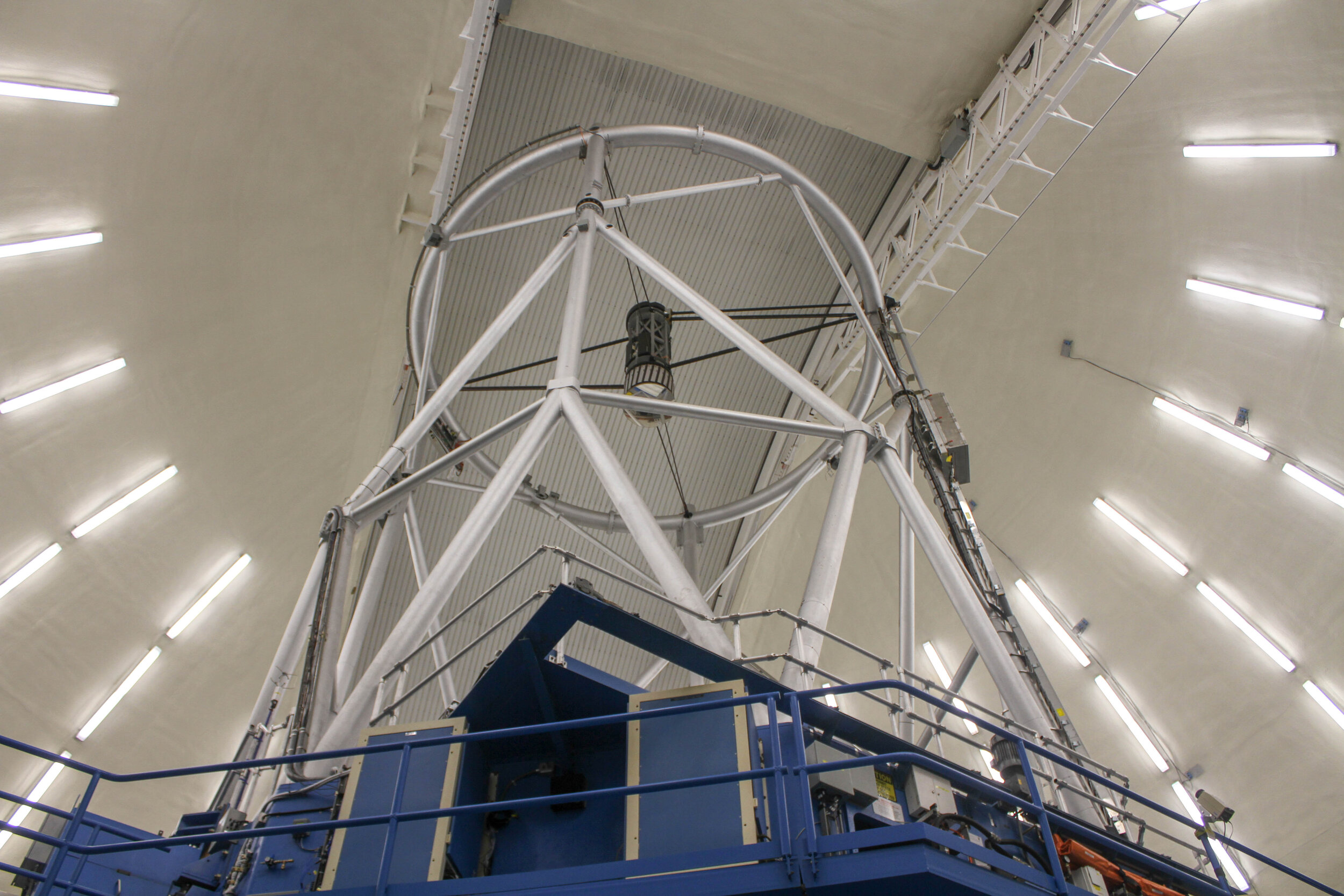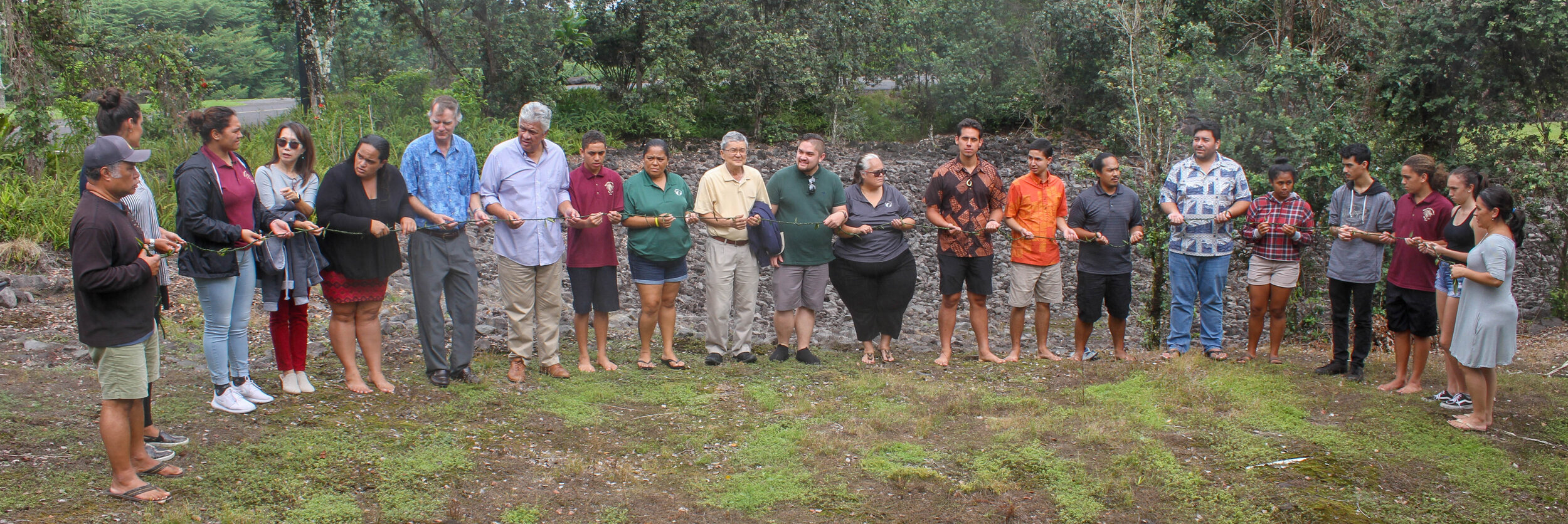A Hua He Inoa
Calling forth a name
View the story of A Hua He Inoa in our video above.
What Is A Hua He Inoa?
A Hua He Inoa — a collaborative effort led by ʻImiloa — is shifting global paradigms, positioning Hawai‘i as the first place in the world to weave traditional indigenous practices into the process of officially naming astronomical discoveries. As Hawaiʻi celebrates 35 years of revitalizing ʻōlelo Hawaiʻi, we acknowledge the capacity and relevance of ʻōlelo Hawaiʻi — and the world view that it informs — in modern contexts.
A Hua He Inoa creates pathways in which language and culture are at the core of modern scientific practices. A first pilot project, the recent A Hua He Inoa retreat informed and enhanced western astronomical work in Hawaiʻi. A Hua He Inoa helps us share traditional knowledge, values and practices through generations
Hawaiian speaking students from throughout Hawaiʻi Island and Maui spent two days immersed in knowledge from ‘ōlelo Hawai‘i experts, education leaders and top research scientists from our state’s astronomical observatories. They peered into the world of scientific research, learned about the recent discovery of two unusual celestial bodies, ascended the summit of Maunakea and expanded their understanding of the vital relationship, and role, of tradition and culture in modern day science.
The mighty collaboration across ages of cultural leaders, astronomers and our student cohort culminated in the selection of two Hawaiian names for two major astronomical discoveries. The names, Kamoʻoalewa and Kaʻepaokaʻāwela created by ʻIkaʻaka Nāhuewai and Kelekolio Wilhelm-Kuamoʻo. These names will serve as the official names for HO3 (Kamoʻoalewa) — an asteroid that orbits the Sun like the Earth but in a slightly different orbit, and BZ509 (Kaʻepaokaʻāwela) — an asteroid near the orbit of Jupiter that moves in an opposite “retrograde” direction. We are currently proposing these two names be adopted by the International Astronomical Union — and organization which governs observatories and astronomical science worldwide - propelling Hawaiian naming practices and Hawaiian culture onto the global scientific stage.
As part of our process, these students stretched their minds and imaginations, gaining an appreciation of the Hawaiian culture in relation to the universe and an understanding of the unlimited potential for future fusions of culture and science. These students helped us make history, and learned that their voices are not only important, but necessary. They witnessed how we can use the traditions that built us to carry us forward, and how bold initiatives can truly change the world.
As the A Hua He Inoa program moves forward, we are so grateful for the students, parents, teachers and administrators, that make this great work possible. ‘Imiloa will continue to take daring steps, inspiring our community and extending the culture of Hawai‘i and the immense value of indigenous practices out into the world.
Below are 6 objects named by the A Hua He Inoa program…
Leleakūhonua
Leleakūhonua was the name granted to a dwarf planet in our outer solar system. The name compares the dwarf planet’s orbit to the flight of migratory birds, and evokes a yearning to be near the Earth. The dwarf planet was discovered by the Subaru Telescope atop Maunakea and has the largest orbit of any dwarf planet or trans-neptunian object in our solar system.
The dwarf planet was named by 30 Hawaiian immersion school kumu recruited through an inservice teacher development program. The kumu, in partnership with UH Hilo's College of Hawaiian Language, Ka Haka ʻUla O Keʻelikōlani, also named the quasar Pōniuāʻena (see below). During the naming process, kumu learned creation stories from different cultures and created related curriculum.
Pōniuāʻena
Pōniuāʻena is the most massive quasar known in the early Universe — formed only 700 million years after the Big Bang. Its name was created by a collaboration of 30 kumu (teachers) from Hawaiian immersion schools as a part of the A Hua He Inoa program.
Quasars are the most energetic objects in the Universe, powered by their supermassive black holes. Pōniuāʻena contains a monster black hole that challenges the current theories of supermassive black hole formation and growth in the early Universe. The light seen from Pōniuāʻena traveled through space for over 13 billion years since leaving the quasar just 700 million years after the Big Bang. The name, Pōniuāʻena, evokes the unseen spinning source of creation, surrounded by brilliance.
'Oumuamua - Messenger From the Distant Past
'Oumuamua is the first interstellar object to ever be discovered. This asteroid-like, cigar-shaped body zoomed through our solar system at such a speed and fashion that it could have only come from outside our solar system. Named by Larry Kimura of Ka Haka 'Ula o Ke'elikolani, College of Hawaiian Language at the University of Hawai'i at Hilo. Discovered in 2017 by Pan-STARRS on Haleakalā. Follow up observations done by Maunakea Observatories (CFH Telescope, Gemini Observatory).
Pōwehi - Embellished Dark Source of Unending Creation
Pōwehi is the first black hole to ever be imaged. Previously, the only way to identify a black hole was to study the motions of objects around and affected by it. Named by Larry Kimura and imaged in 2018 by the Event Horizon Telescope, a collaboration of telescopes of which the Maunakea Observatories (James Clerk Maxwell Telescope & Submillimeter Array) were an integral part.
Kamo'oalewa
Sourced from the Kumulipo and alludes to a celestial object that is oscillating and reflecting the asteroid’s path in the sky when viewed from Earth. Kamo'oalewa has an orbit similar to Earth’s and is therefore a constant companion.
Ka'epaoka'āwela
The mischievous opposite-moving companion of Jupiter. Ka'epaoka'āwela orbits near Jupiter but in the opposite direction of most other solar system bodies. Kamo'oalewa and Ka'epaoka'āwela are newly discovered and unusual asteroids in our solar system. Named by a group of Hawaiian speaking students from Hawai'i Island and Maui. Discovered in 2015 and 2016 by Pan-STARRS on Haleakalā.





















